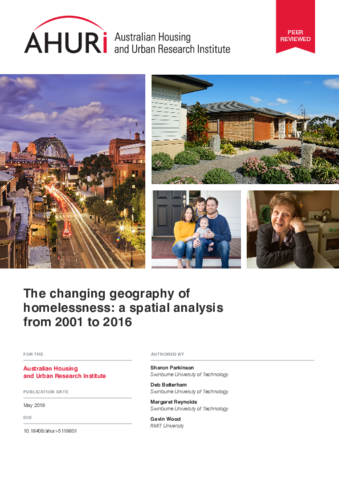This research examines the changing geography of homelessness. It outlines the extent to which homelessness is becoming more spatially concentrated over time; where it is rising and falling; and the importance that housing affordability, poverty and labour market opportunities play in reshaping its distribution.
On a per capita basis homelessness remains highest in very remote areas. Indigenous background remains the strongest determinant of homelessness in remote areas and much of this is accounted for by severe crowding.
The largest share of homelessness in 2016 was in New South Wales, followed by Victoria and Queensland—a pattern in line with overall population distribution. NSW has increased its share of national homelessness from roughly one-quarter to one-third over 15 years. Most of the smaller states and territories have a falling share of the national count. In both the Northern Territory and Western Australia there is a sharp decline.
Homelessness is becoming more concentrated in major cities, particularly in the most populous states of NSW and Victoria. In 2001, capital cities accounted for 48 per cent of national homelessness, well below their share of the national population (at 65%). By 2016 the national share for capital cities had increased to 63 per cent, or nearly two-thirds of all homelessness.
Policy makers and Specialist homelessness services providers need to plan for and direct additional resources to address the increasing urbanisation of homelessness between capital cities, regional and remote areas, as well as the concurrent suburbanisation of homelessness within capital cities. Specialist homelessness services are vital in both the prevention and first responses to homelessness, it is critical that they are well located to respond in areas where demand is highest.


